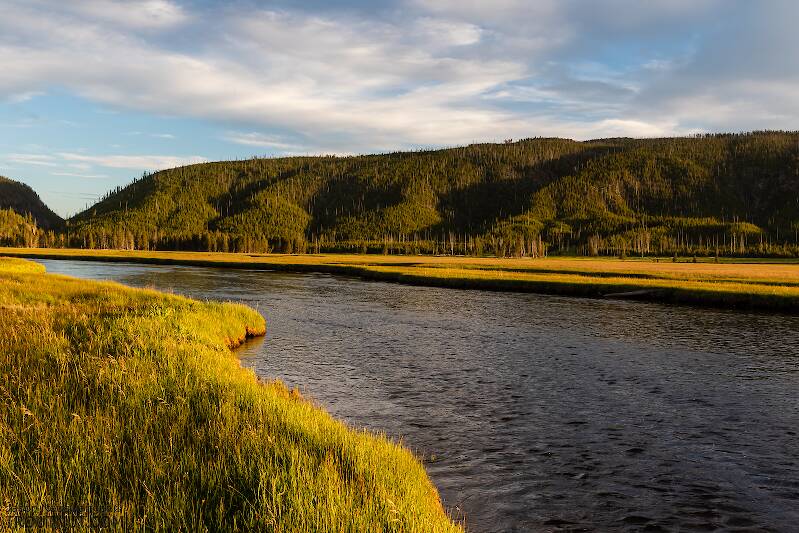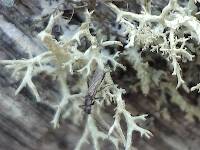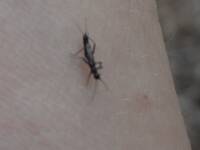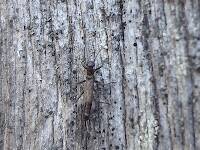
Hex Mayflies
Hexagenia limbata
The famous nocturnal Hex hatch of the Midwest (and a few other lucky locations) stirs to the surface mythically large brown trout that only touch streamers for the rest of the year.
Featured on the forum

This one was surprisingly straightforward to identify. The lack of a sclerite at the base of the lateral hump narrows the field quite a bit, and the other options followed fairly obvious characteristics to Clostoeca, which only has one species, Clostoeca disjuncta.

Troutnut is a project started in 2003 by salmonid ecologist Jason "Troutnut" Neuswanger to help anglers and
fly tyers unabashedly embrace the entomological side of the sport. Learn more about Troutnut or
support the project for an enhanced experience here.
Davez on Sep 27, 2007September 27th, 2007, 2:27 pm EDT
JW,
We will be on the horn the same time you'll be out there. awesome.
email me, we'll chat.. baby is almost here, so im local right now....im betting on the next two weeks to get this kid on the ground!!!!
with any luck and a coordinated schedule, we'll hook up on your turf and mine this season.
We will be on the horn the same time you'll be out there. awesome.
email me, we'll chat.. baby is almost here, so im local right now....im betting on the next two weeks to get this kid on the ground!!!!
with any luck and a coordinated schedule, we'll hook up on your turf and mine this season.
RleeP on Sep 28, 2007September 28th, 2007, 1:40 am EDT
>>The other constant is that you'll find trout and often large trout on feeding stations in spring creeks that you won't find in the freestone streams. You can actually get these trout to rise in the winter even if there is nothing coming off!
There is one major exception to this and that is Yellow Creek in Bedford County. In the fly zone the fish tend to rise even in the winter on this stream for Baetis.... You can usually find rising trout on this stream all winter. I know guys that fish this stream with a little Pheasant Tail nymph or Baetis nymph and just clean up all winter.>>
I don't think that is so much an exception as it is simply another example of the point you were making. I wouldn't consider Yellow Creek a "freestone stream". It's more of a freestone/spring creek hybrid given the geology of its watershed. The same could be said of a pile of other PA streams like the Kishacoquillas, Big Fishing Creek, Penns, the Easton Bushkill, Saucon Creek, Spruce Creek, etc. etc. All of which provide the sort of fishing you describe, and the main reason it is so are the temperature and fertility similarities these waters all share to some extent with those of a "spring creek" as traditionally defined.
Just a viewpoint...
There is one major exception to this and that is Yellow Creek in Bedford County. In the fly zone the fish tend to rise even in the winter on this stream for Baetis.... You can usually find rising trout on this stream all winter. I know guys that fish this stream with a little Pheasant Tail nymph or Baetis nymph and just clean up all winter.>>
I don't think that is so much an exception as it is simply another example of the point you were making. I wouldn't consider Yellow Creek a "freestone stream". It's more of a freestone/spring creek hybrid given the geology of its watershed. The same could be said of a pile of other PA streams like the Kishacoquillas, Big Fishing Creek, Penns, the Easton Bushkill, Saucon Creek, Spruce Creek, etc. etc. All of which provide the sort of fishing you describe, and the main reason it is so are the temperature and fertility similarities these waters all share to some extent with those of a "spring creek" as traditionally defined.
Just a viewpoint...
JOHNW on Sep 28, 2007September 28th, 2007, 5:45 am EDT
Rlee,
I would classify the current incarnation of the Saucon as a spring creek as it draws 75% or more of it's regular flow from a substantial undergound holding through springs in the more superficial limestone.
The floded mine that feeds the Saucon is approximatly 1.5 miles deep and snakes all over the place. The township which owns that water supply will likely never go dry.
JW
I would classify the current incarnation of the Saucon as a spring creek as it draws 75% or more of it's regular flow from a substantial undergound holding through springs in the more superficial limestone.
The floded mine that feeds the Saucon is approximatly 1.5 miles deep and snakes all over the place. The township which owns that water supply will likely never go dry.
JW
"old habits are hard to kill once you have gray in your beard" -Old Red Barn
Gene
Posts: 107
Posts: 107
Gene on Sep 28, 2007September 28th, 2007, 9:52 am EDT
Rleep:
I agree that Yellow is spring fed (and so are the other streams you mention) especially in the upper areas but the way the trout hold feeding stations in the fly area and other parts of the stream is a bit different than how the fish hold a feeding station in a stream like Big Spring.
Also, the volume of water in those streams is mostly dependent upon the rainfall patterns which is not immediately true when it comes to a true spring creek. The volume of water in a true spring creek is extremely stable and depends more on a long term basis over all climatic conditions( such as a drought for 2 years etc.).
The temps on the spring creeks are always the same --usually within 2-3 degrees. The temps. on Yellow and similar streams (especially in the fly zone) can change rapidly.
Also, the turbidity is a factor. Rain seldom bothers most spring creeks but it does change Yellow Creek and other in a hurry some days. The turbidity also plays a factor in fly selection and approach. The spring creeks are alway the same..you know what you are going to get.
I love Yellow and some of those other streams you mentioned. I wish I could get up there more but I'm about 1 hr and 45 mins away. I sometimes leave here and it's 50 degrees in the winter and when I get to Yellow.....it's snowing!
Tight lines and great end of the season fishing...maybe I'll just see you on stream
gene macri
www.flyfisher.com
I agree that Yellow is spring fed (and so are the other streams you mention) especially in the upper areas but the way the trout hold feeding stations in the fly area and other parts of the stream is a bit different than how the fish hold a feeding station in a stream like Big Spring.
Also, the volume of water in those streams is mostly dependent upon the rainfall patterns which is not immediately true when it comes to a true spring creek. The volume of water in a true spring creek is extremely stable and depends more on a long term basis over all climatic conditions( such as a drought for 2 years etc.).
The temps on the spring creeks are always the same --usually within 2-3 degrees. The temps. on Yellow and similar streams (especially in the fly zone) can change rapidly.
Also, the turbidity is a factor. Rain seldom bothers most spring creeks but it does change Yellow Creek and other in a hurry some days. The turbidity also plays a factor in fly selection and approach. The spring creeks are alway the same..you know what you are going to get.
I love Yellow and some of those other streams you mentioned. I wish I could get up there more but I'm about 1 hr and 45 mins away. I sometimes leave here and it's 50 degrees in the winter and when I get to Yellow.....it's snowing!
Tight lines and great end of the season fishing...maybe I'll just see you on stream
gene macri
www.flyfisher.com
Quick Reply
Related Discussions
Topic
Replies
Last Reply
8
Jun 16, 2013
by PaulRoberts
by PaulRoberts
4
Jul 5, 2016
by Bombillo
by Bombillo
1
Sep 14, 2010
by SlateDrake9
by SlateDrake9





